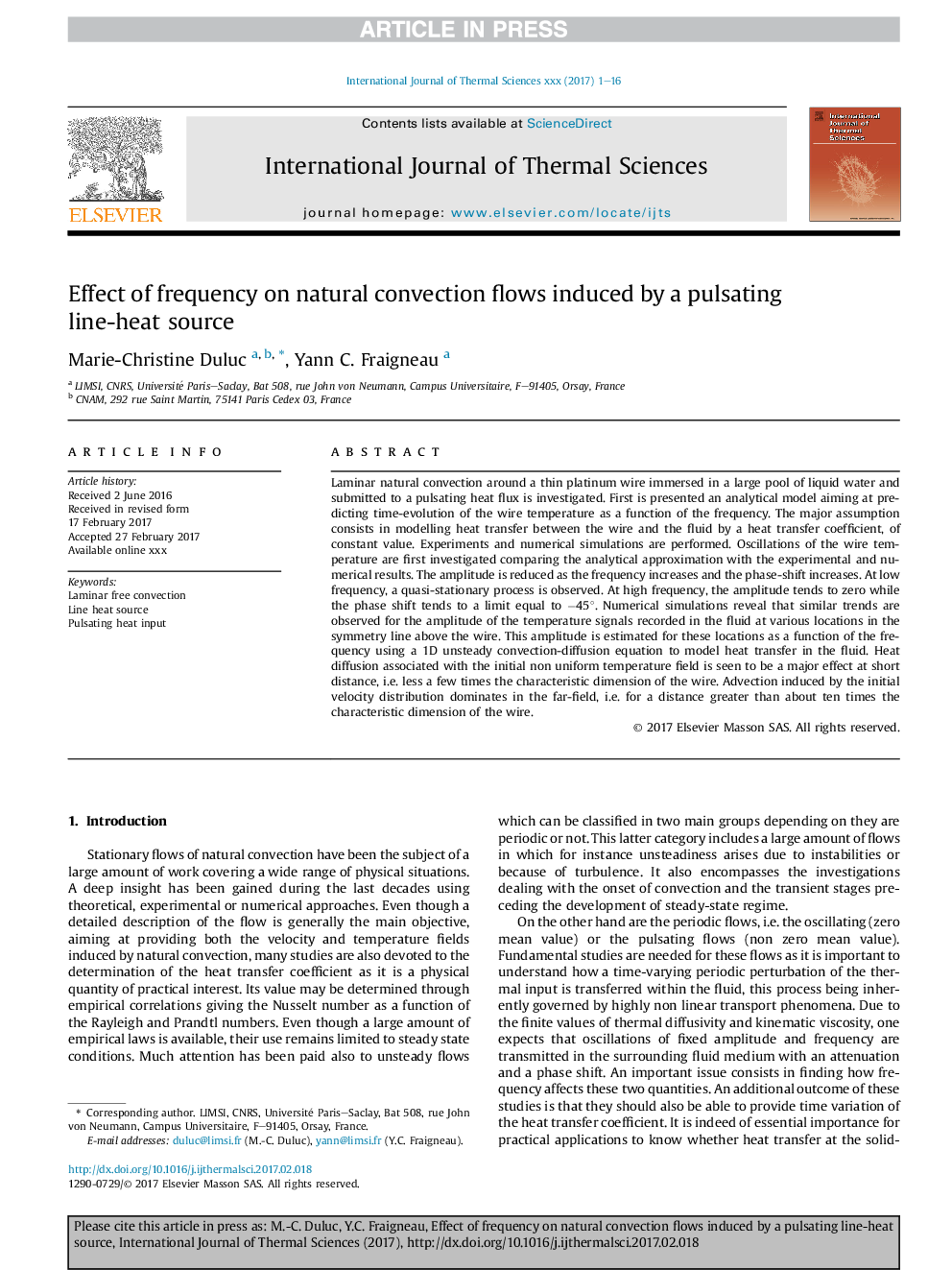| Article ID | Journal | Published Year | Pages | File Type |
|---|---|---|---|---|
| 4995411 | International Journal of Thermal Sciences | 2017 | 16 Pages |
Abstract
Laminar natural convection around a thin platinum wire immersed in a large pool of liquid water and submitted to a pulsating heat flux is investigated. First is presented an analytical model aiming at predicting time-evolution of the wire temperature as a function of the frequency. The major assumption consists in modelling heat transfer between the wire and the fluid by a heat transfer coefficient, of constant value. Experiments and numerical simulations are performed. Oscillations of the wire temperature are first investigated comparing the analytical approximation with the experimental and numerical results. The amplitude is reduced as the frequency increases and the phase-shift increases. At low frequency, a quasi-stationary process is observed. At high frequency, the amplitude tends to zero while the phase shift tends to a limit equal to â45°. Numerical simulations reveal that similar trends are observed for the amplitude of the temperature signals recorded in the fluid at various locations in the symmetry line above the wire. This amplitude is estimated for these locations as a function of the frequency using a 1D unsteady convection-diffusion equation to model heat transfer in the fluid. Heat diffusion associated with the initial non uniform temperature field is seen to be a major effect at short distance, i.e. less a few times the characteristic dimension of the wire. Advection induced by the initial velocity distribution dominates in the far-field, i.e. for a distance greater than about ten times the characteristic dimension of the wire.
Keywords
Related Topics
Physical Sciences and Engineering
Chemical Engineering
Fluid Flow and Transfer Processes
Authors
Marie-Christine Duluc, Yann C. Fraigneau,
